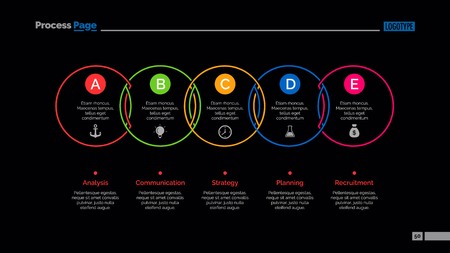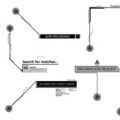Introduction to Tarot in British Culture
In the winding lanes of British history, tarot cards have long held a place of curious fascination and profound mystery. Unlike the grand spectacle often associated with fortune-telling on the Continent, tarot’s rise in Britain has been marked by a distinctive blend of subtlety, wit, and intellectual intrigue. From Victorian parlours to modern-day coffee shops in London, the British have woven tarot into their cultural tapestry, embracing it not just as a tool for divination but as a mirror reflecting the complexities of the human psyche. This unique approach is shaped by an undercurrent of scepticism mingled with an enduring love for symbolism and storytelling—a dynamic that has allowed tarot to flourish both as an art form and as a means of self-exploration. As we delve into the psychology behind tarot layouts through a British lens, we begin to uncover how these cards serve as more than mere instruments of prediction; they become keys unlocking deeper layers of personal insight, collective myth, and psychological resonance across generations.
2. The British Approach to Tarot Layouts
The art of tarot in Britain is a tapestry woven from centuries of tradition, folklore, and a distinctly British sensibility. When we speak of “British tarot layouts,” we’re referring not only to the physical arrangement of cards but also to the underlying psychology and worldview that inform them. The British approach is pragmatic yet poetic—deeply intuitive while maintaining a grounded respect for symbolism and history.
Unpacking Distinctive British Spreads
Perhaps the most iconic of all, the Celtic Cross spread originated in the British Isles and remains a favourite among tarot readers across the UK. This layout reflects both the practical and mystical sides of British culture: its cross formation echoes ancient Christian symbolism, while its intricate positional meanings invite introspection, much like the British penchant for deep conversation over a cup of tea.
Traditional vs. Modern Innovations
| Spread Type | Historical Roots | Psychological Focus | Modern Adaptations |
|---|---|---|---|
| Celtic Cross | Late 19th-century Britain | Self-reflection, fate vs. free will | Simplified versions, themed variants (e.g., career focus) |
| Three-Card Spread | Common in folk practices | Past, present, future storytelling | Expanded to five or seven cards; used in therapy sessions |
| Astrological Spread | Tied to British astrological societies | Exploring influence of cosmic cycles | Personalised based on birth charts |
| The Horseshoe Spread | Celtic folklore influences | Problem-solving, navigating uncertainty | Digital adaptations for online readings |
Sensibilities Shaping Tarot Practice in Britain
What makes British tarot unique is an understated humility—a recognition that answers may be ambiguous, layered, or even delightfully paradoxical. Readers often encourage querents to find personal meaning within the cards rather than prescribing rigid interpretations. This mirrors broader cultural traits: a love of metaphor, dry humour, and quiet resilience. Whether drawing upon ancient spreads or crafting modern ones inspired by local legends or contemporary issues, British tarot practitioners blend intuition with intellect. In this dance between old and new, each layout becomes an invitation: to explore not just what lies ahead, but who we are as we journey forward.

3. Cognitive Psychology and Pattern Recognition
The British approach to tarot is often an intricate dance between the rational mind and the intuitive heart. Cognitive psychology, a field steeped in the study of perception and pattern recognition, offers valuable insights into why tarot layouts feel so compelling within British culture. At its core, the human brain is wired to seek patterns—even where none may objectively exist—an evolutionary trait that has shaped both survival instincts and creative thinking throughout British history.
When a Brit sits before a spread of cards—be it the classic Celtic Cross or a more modern layout—the mind instinctively searches for order amidst the apparent chaos. The arrangement of suits, numbers, and symbols becomes a canvas upon which meaning is projected. This cognitive process of pattern recognition allows the querent to weave together disparate images into a cohesive narrative, echoing the British love for storytelling and symbolism found in everything from Shakespeare’s sonnets to local folklore.
What sets the British experience apart is a cultural reverence for blending logic with intuition. While some may approach tarot with scepticism—a nod to Britain’s empirical tradition—there remains an undercurrent of openness to mystery, reminiscent of misty moors and ancient stone circles. Within this dynamic, pattern recognition becomes not just an act of seeing but of feeling; it’s as if the mind and spirit join hands across the table, each card revealing both what is known and what can only be sensed.
This interplay between cognition and intuition forms the backbone of how many in Britain engage with tarot layouts today. By recognising patterns, individuals are able to anchor their inner questions in tangible form, finding both comfort and inspiration as they navigate life’s uncertainties—much like their ancestors once did through poetry, prophecy, and quiet reflection by the fireside.
4. Narrative Therapy and Storytelling
Within the tapestry of British culture, storytelling is both an art and a means of connection, passed down through fireside tales, classic literature, and contemporary narratives. This innate British affinity for weaving stories finds a natural counterpart in tarot readings, where each card layout becomes a stage for personal myth-making. The intertwining of narrative therapy with tarot creates a unique framework supporting self-discovery and healing—a synergy cherished across the UK.
The Role of Storytelling in British Tarot Readings
British tarot practitioners often approach readings not just as fortune-telling but as collaborative story-building. Each spread unfolds like a well-crafted novel: the past cards set the scene, the present reveals conflict or challenge, and future cards hint at resolution. This mirrors the narrative arcs beloved in British literature from Austen to Rowling—inviting individuals to become protagonists in their own lives.
Narrative Therapy Principles in Tarot Practice
| Therapeutic Principle | Application in Tarot Layouts | Example (UK Context) |
|---|---|---|
| Externalising Problems | Using cards to separate the issue from the individual | The Tower card may represent upheaval in one’s job rather than personal failure |
| Re-authoring the Narrative | Inviting clients to rewrite their story through card interpretation | The Death card symbolises transformation, prompting new beginnings after redundancy |
| Identifying Strengths | Highlighting positive cards as resources within one’s personal narrative | The Strength card reflects resilience drawn from British “stiff upper lip” tradition |
The Healing Power of Shared Stories
In group settings such as local tarot circles or spiritual retreats across England, Scotland, and Wales, storytelling becomes communal. Participants share their interpretations and life experiences inspired by spreads—mirroring old pub yarns or village gatherings. Through this process, tarot readings act as mirrors; they reflect back inner truths while inviting fresh perspectives. The narrative approach gives individuals permission to step outside rigid roles and imagine themselves anew—a gentle form of healing rooted deeply in Britain’s cultural soul.
5. Collective Consciousness and British Identity
The tapestry of tarot in Britain is interwoven with the threads of collective consciousness, folklore, and time-honoured societal archetypes. To understand the psychology behind tarot layouts within a British context, one must first appreciate how deeply ingrained beliefs and shared narratives shape the interpretations of cards. The British psyche, steeped in centuries of myth, legend, and communal ritual, brings a unique flavour to the practice of tarot. For instance, Arthurian legends, tales of the Green Man, and the mystique of ancient stone circles often surface—either overtly or subtly—in the collective imagination during readings.
British tarot practitioners frequently draw upon this vast reservoir of collective stories and archetypes. The archetype of the wise old hermit, for example, may resonate more profoundly in a culture that reveres figures like Merlin or Gandalf. Similarly, cards representing struggle and perseverance may evoke the storied spirit of resilience found in British history, from wartime endurance to the stoic humour of everyday life.
Folklore also plays a pivotal role in shaping tarot symbolism. Local myths—such as faery lore from the West Country or Scottish tales of the selkies—add layers of meaning to cards that might otherwise seem universal. This infusion of folklore transforms tarot readings into a mirror reflecting not just the individual’s psyche but also the soul of a nation. It is through this lens that certain layouts gain popularity: Celtic Cross spreads, for example, may feel particularly resonant due to their roots in Celtic tradition and their alignment with ideas of journeying, fate, and interconnectedness.
On a societal level, British tarot practice often embodies values such as discretion, understatement, and respect for tradition. Group readings or community tarot gatherings serve as modern-day rituals, echoing ancient customs where wisdom was shared around hearths and firesides. The collective consciousness thus becomes both guide and participant; every shuffle and spread is subtly influenced by the stories we have inherited and continue to tell.
In essence, British tarot is not merely an individual pursuit but a communal act. Each reading is a quiet conversation with generations past, a gentle nod to the myths that shape us, and an exploration of how our shared identity informs the meanings we discover within the cards.
6. Modern Psychological Theories in British Tarot Practice
In the evolving landscape of British tarot, modern psychological theories have woven themselves into the fabric of how practitioners interpret and engage with tarot layouts. These contemporary approaches are not just academic overlays; rather, they mirror the lived experiences and spiritual curiosities of seekers across the UK.
Jungian Archetypes and Collective Unconscious
Carl Jung’s influence is unmistakable in British tarot circles. Many readers view each card as a symbolic gateway to the collective unconscious—a shared pool of myths, symbols, and archetypes that resonate with both individual and communal stories. For example, The Fool is often interpreted as the archetype of new beginnings, echoing the British appreciation for journeys, both literal and metaphorical. In readings, Jungian theory encourages seekers to recognise their own shadow aspects or hidden desires reflected in the cards, guiding them towards greater self-integration.
Humanistic Approaches: Person-Centred Reflection
The humanistic school, inspired by thinkers like Carl Rogers, has found fertile ground within UK tarot practice. Here, the reader acts less as a mystic authority and more as a compassionate facilitator—holding space for clients to uncover their own meanings within the spread. The British tendency towards understated empathy and quiet introspection aligns beautifully with this approach. The tarot layout becomes a mirror for personal growth, helping individuals explore their values, choices, and emotional landscapes without judgement.
Psychoanalytic Threads: Understanding Patterns
Freud’s psychoanalytic legacy, though sometimes viewed through a sceptical British lens, nevertheless informs some interpretations—especially regarding recurring patterns and unconscious motivations. Certain spreads are used to trace familial dynamics or long-standing beliefs, inviting seekers to question which inherited scripts may be influencing their present choices. This gently probing style resonates with those who appreciate the subtlety of British humour and understatement in confronting life’s deeper questions.
Integration in Contemporary UK Tarot Culture
Across Britain today, these psychological frameworks are not applied rigidly but are blended intuitively with traditional lore and local storytelling. A reading in London might reference literary characters alongside Jungian archetypes; a session in Edinburgh could weave together family history with psychoanalytic themes. Ultimately, modern psychological theories provide British tarot practitioners with a rich palette—allowing each reading to be as unique as the individual seeking guidance, yet always grounded in both timeless wisdom and contemporary insight.


